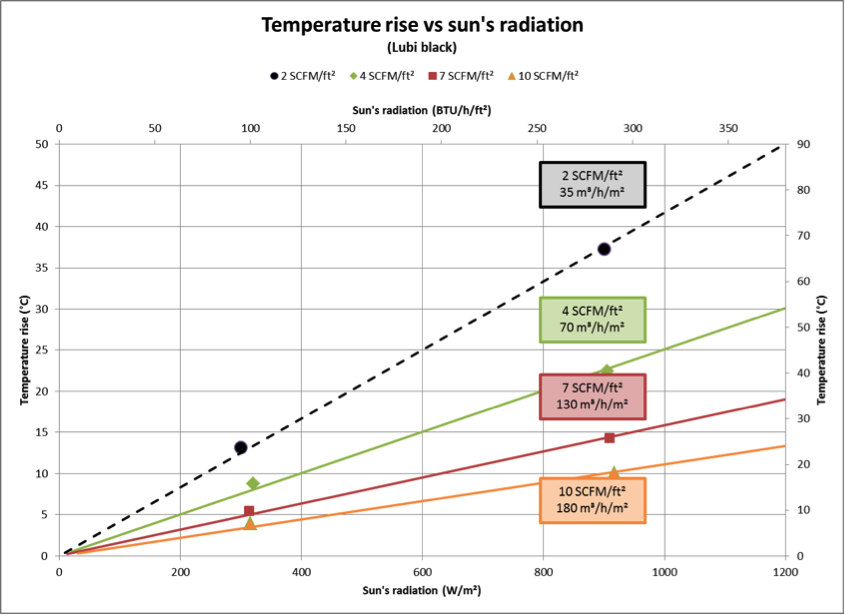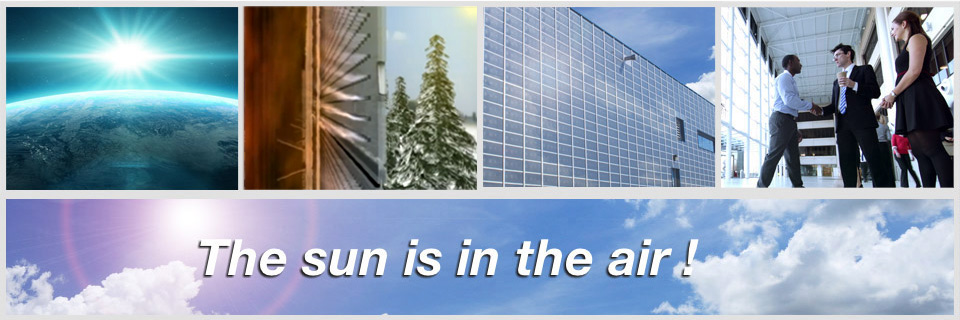Is my building fit for the installation of a solar collector?
Any building that needs air renewal can benefit from the installation of a solar air collector. Factories, government offices, stores and such places need to renew their air on an ongoing basis in order to provide good quality air to the people inside.
How much surface area does the collector need on a building?
The surface area of a solar collector will depend on the volume of new air that will be treated. Usually, a solar collector can process a 2 to 12 cfm/ft² air flow. The surface area is usually determined based on the particulars of a project’s design.
Is there financial aid available to help me implement my project?
A number of government programs are usually available to help companies fund the installation of solar collectors on their buildings. These programs are offered by several levels of government and/or by energy suppliers and utilities. You will have to check the availability of such programs for the region where your building is located.
How much savings can I expect?
A solar air collector should generate 10-40% savings on the costs of heating new air, on a yearly basis. Actual savings will vary with the particulars of the project, e.g. operating schedule, orientation of the solar collector, local conditions, etc.
What is the life expectancy of your solar collectors?
Enerconcept Technologies solar collectors are built with high-quality materials, which gives them a 20+ year life expectancy in the right environment.
On which wall should we install the solar collectors?
Ideally, a solar collector should be facing south for the best energy yield. Solar collectors facing east or west will have less sun exposure, but they will still offer a good energy yield. (Note: The opposite is true in the southern hemisphere.)
What do you mean by “air destratification?”
In a room with a high ceiling, hot air tends to rise and accumulate near the ceiling. Thus, a significant quantity of energy goes unused and ends up being lost by the building’s envelope. Air destratification evens out the room’s temperature from the floor to the ceiling, which increases the comfort level in the areas that are used by people and generates significant savings in terms of heating costs.
Will you help us apply for financial aid?
For turnkey solar projects, Enerconcept offers all the help needed to secure applicable subsidies.
What type of maintenance do your solar collectors need?
Enerconcept Technologies solar air collectors do not need maintenance because they have no moving parts.
Do the elements affect the solar collectors?
Enerconcept Technologies solar collectors are built with sturdy, long-life materials. Therefore, they are protected against the damage extreme climates may inflict.
How much temperature rise can your solar collectors generate?
Several factors influence the temperature rise in a solar air collector: its color, flow vs. area ratio, sun exposure, etc. As an example, as shown in the chart below, a black Lubi solar collector operating at 4 SCFM/ft² with full sun exposure should generate approximately a 25°C temperature rise as compared to the outside air.

Does the color of the absorber matter?
The black absorber is the most efficient of all. However, light-colored absorbers are very efficient too.
What happens in the summer?
Most of our solar air heating systems feature an alternate air inlet so you can bypass the solar collector when temperatures are too high.
Are your solar collectors certified?
Enerconcept Technologies solar collectors are CSA (Canadian Standard Association) certified under CSA F378 Series-11.
Will I help reduce greenhouse gases with my solar collector?
Installing a solar air collector will reduce the quantity of fossil fuel that is needed to heat the air, which will significantly lower the greenhouse gas emissions of your building.





